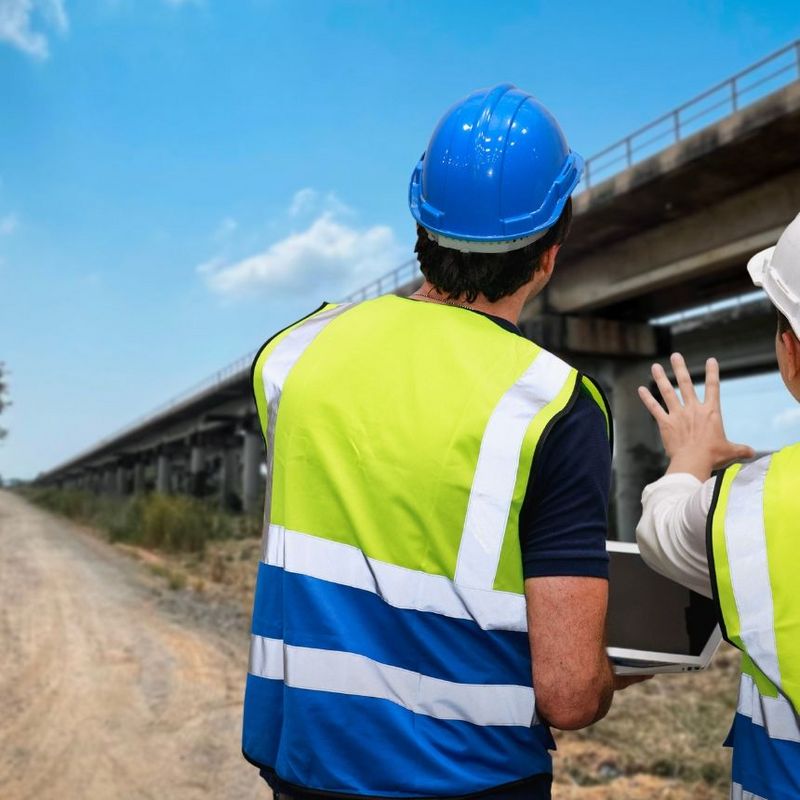13 July 2023
The era of nuclear energy in Germany has come to an end. In mid-April, the last German nuclear power plants – Emsland, Isar 2 and Neckarwestheim 2 – were taken off grid. But it will be many years until the land around and under the sites returns to its fully natural state. Detlef Beltz and his colleagues at TÜV NORD have been playing a key role in ensuring that the facilities are safely dismantled.
#explore: Mr. Beltz, what does the dismantling of a nuclear power plant involve, and why does it take so much time?
Detlef Beltz: First of all, you need a permit from the competent authority to dismantle a nuclear power plant. These applications are usually submitted years before the shutdown and meticulously checked by TÜV experts on behalf of the approval authority: We look at whether the dismantling can be carried out safely in the envisaged form and radiological protection is guaranteed. These thorough examinations are essential, because all the scenarios that might possibly arise during dismantling must be considered in the planning stage. Which means that the approval process itself already takes a lot of time.
What happens once permission has been granted?
Even then, the operator can’t just demolish everything. Instead, it has to get permission for all the measures in so-called work permit procedures. All dismantling work of any significance at nuclear sites requires the involvement of the competent supervisory authority and the commissioned experts – which is where organisations like TÜV NORD come in. For example, we visit the site to check that radiation protection is guaranteed and, for example, that the crane systems are working safely and reliably. We also look at which specific tools and methods should be used for which parts of the dismantling work. What are their advantages and disadvantages? Which procedure will ensure that the workers will be exposed for as short a period as possible in areas exposed to radiation? Which method will generate less radioactive dust that could spread radioactivity to other parts of the building? How much “sawdust” will be produced by plasma cutters or band saws, for example, which then has to be disposed of? Which methods have already proven to be robust and reliable? In the case of remote-controlled dismantling processes, a slow but reliable method may be preferable to a faster but error-prone one – especially when it comes to keeping the time employees spend in radiation fields, for example during repair work, to the absolute minimum.
About Detlef Beltz
Detlef Beltz is the Director of Decommissioning and Dismantling at TÜV NORD. The graduate physicist also chairs the “Decommissioning” committee at the Waste Management Commission (Entsorgungskommission – ESK), a panel of experts that advises the Federal Environment Ministry on nuclear waste management issues.
No doubt you pay particular attention to fuel assemblies.
We check each work step to ensure that it won’t have any repercussions for safety-related plant systems, such those used to cool the fuel assemblies. These fuel assemblies contain around 99 percent of the radioactivity of the nuclear power plant. After being shut down, they must first be left to decay in a cooling basin for at least five years before they can be packed in special rail storage containers and transported to an interim storage facility. On the one hand, the water in this fuel element storage pool provides shielding from the radiation, and, on the other, it dissipates the heat that the fuel rods generate during the decaying process. In other words, it wouldn’t be a good idea to dismantle this basin or even the auxiliary systems with which it is connected.
So, until the fuel assemblies have been removed from the nuclear power plant, no major dismantling can take place?
This was what happened with the early nuclear power plants. Nowadays, people take a much closer look at what’s relevant in safety terms and what can be dismantled beforehand if necessary. In the case of the nuclear power plants that have just been shut down, this would include the generator, which doesn’t have a role to play in cooling the fuel rods. In principle, the turbines and generators can be dismantled relatively early on, as they no longer have any safety-related significance or function. However, the deeper you get into the core of the plant, the more the radioactivity increases, which means that the protection requirements that must be met during dismantling also become more stringent.
Part of a turbine from a boiling water reactor. In the background, a large saw can be seen that can be used to dismantle large components.
What happens to the materials once dismantling has taken place?
Under Germany’s Atomic Energy Act there are two ways to deal with residues and dismantled plant components. For one, they can be “harmlessly recycled”. This means that they must demonstrably fall below the applicable limit values and not pose a risk to people or the environment. Then they can be disposed of in landfills, for example, or reused in road construction. For this to happen, they must first be measured to establish their harmlessness. This process, known as clearance, is very complex and demanding and is also monitored by our experts. The experts stand in front of the clearance measurement system – a system whose purpose is to ensure compliance with the limit values – and check that all the settings are correct. They take control samples, which we evaluate in our laboratories and compare with the results of the clearance measurement system in the nuclear power plant.
Which part of a nuclear power plant falls into this category?
98 percent of the total mass of a nuclear power plant can be disposed of in this way. The remaining two percent is radioactive waste and must therefore be disposed of in a proper manner, which is the second option under the Atomic Energy Act. A distinction is made between two types of radioactive substances, each of which also requires different handling: these are activated and contaminated substances. In the case of contamination, you have something which is contaminated with radioactivity. During dismantling, the contaminated layers of a concrete wall or pipeline, for example, are milled off or washed off with high-pressure jets until the underlying material is no longer more than negligibly radioactive. The contaminated material is packed into drums, for example, which are in turn put into sheet steel containers, known as Konrad containers. These will first be taken to an interim storage facility before finally being transported to the Konrad mine, the repository for non-heat-generating radioactive waste, which is scheduled to go into operation in 2029. The radioactive waste is conditioned, i.e. dried or compressed, for example, to ensure that, on the one hand, the radioactive waste containers aren’t vulnerable to rust and, on the other, that they have the smallest possible volume overall. After all, the Konrad repository doesn’t have unlimited capacity.
The Konrad repository was built on the site of a former iron ore mine and is scheduled to go into operation in 2029.
And the second type of radioactive material?
This would be those components or parts of buildings that mainly come from the reactor core or its immediate vicinity. The reactor pressure vessel and its metallic internals into which the fuel assemblies were inserted will themselves have been activated and made radioactive by the neutron radiation from the fuel rods. These highly radioactive components are cut up under water, for example using plasma cutters, packed into drums and then stored safely within a thick metallic shield. Only then can they be pulled out of the radiation-shielding water. The devices used are remotely controlled from the edge of the pool and checked by us in advance: Are they fundamentally suitable for use? Are there any intervention concepts? If a device fails underwater, then it must also be possible to retrieve it without sending in a diver. Final disposal in the Konrad mine is also possible for these activated components, but not for the highly radioactive and heat-generating materials like the fuel assemblies and waste generated by reprocessing them. A repository has yet to be found for this purpose – the Konrad mine isn’t up to the task. It will certainly take until the middle, possibly until the end, of the century for a suitable location to be found, for the repository to be developed and the fuel rods from the interim storage facilities to be taken there.
When will this kind of dismantling finally be finished?
In Germany, our primary aim is to restore the facilities to greenfield sites. At the end of the day, the entire mass of the nuclear power plant needs to be taken away, including the foundations in the ground. The overall dismantling is a lengthy process that can easily take ten to 15 years, even if everything goes smoothly. Depending on the situation on site, this can also take much longer. The dismantling of the Greifswald nuclear power plant has been underway for 28 years now and is still ongoing.
And when the last nuclear power plant in Germany has been dismantled, will your work and that of your colleagues be done?
Not at all! New permits are needed for the existing interim storage facilities for irradiated fuel elements and high-level radioactive waste. These permits are currently limited to 40 years, and the first of them will expire in the 2030s. And the radioactive waste will still be around when grass and meadow flowers finally start growing on the site of a former nuclear power plant. Much of the low- and intermediate-level radioactive waste generated while dismantling nuclear power plants will also still have to be checked to see whether it meets all the conditions for storage in the Konrad mine. The work related to the construction of the repository for heat-generating radioactive waste hasn’t really started yet. So, it follows that the use of nuclear energy – even if we are now focusing on the issues of decommissioning and disposal in Germany – will occupy us for years and decades to come.






